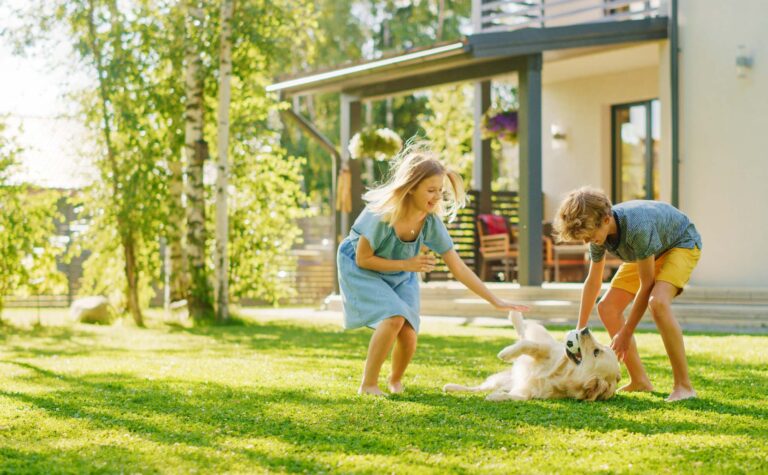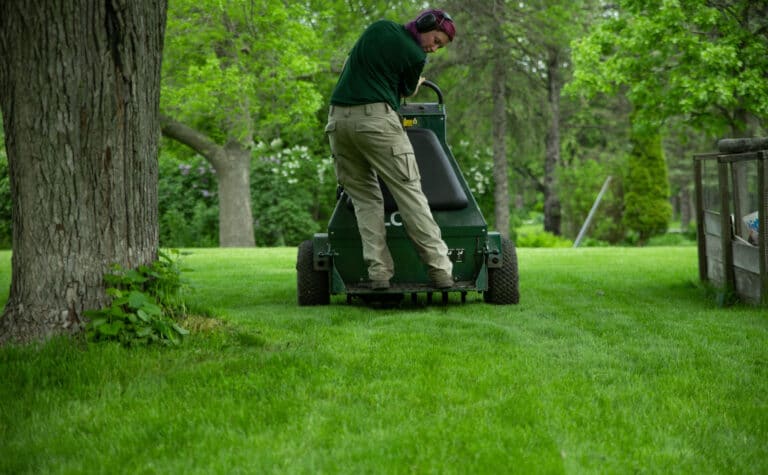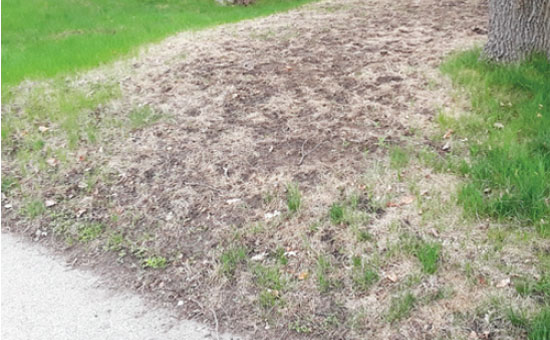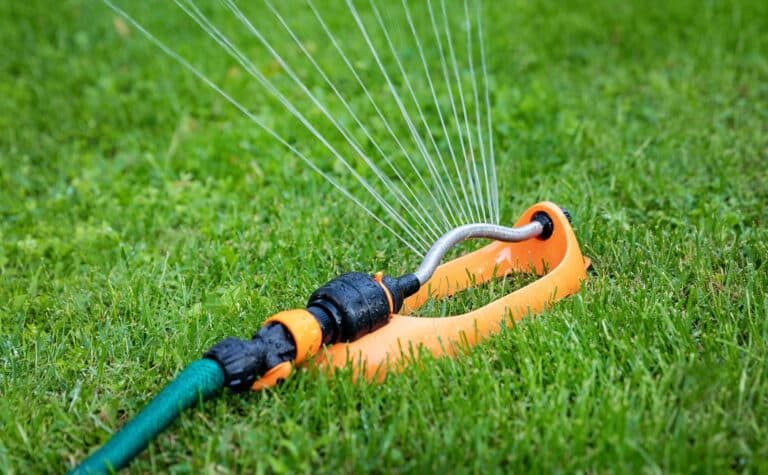Lawn Care Frequently Asked Questions
Below are the most frequently asked questions our lawn care experts hear about Minnesota lawn care. Have a question you don’t see below? Contact us for more information!
Things to know before and after your service
A: Our fertilizers will not harm children or pets. With all herbicides, you should keep children and pets off of the lawn for a few hours after application. Once it is dry, it is safe for kids and pets to be on the yard again. If you are concerned your pet or child was on the lawn soon after application, rinsing their feet or paws will get any residue off. The herbicides we use can be compared to a typical household cleaner found under your sink.
A: No, they will not. The granular products we use do not move in soil. As for the liquid products, once they are dry, they have already been absorbed by the plant and are working.
A: The pre-emergent application is done in the spring only and Is to prevent crabgrass from emerging or germinating. The application DOES NOT prevent broadleaf weeds and it will kill newly planted seed so we CANNOT apply it if a homeowner wants to do spring seeding
A: No. The crabgrass pre-emergent actually needs to be watered into the soil for it to work properly. The sooner it gets watered in, the better.
A: For the fertilizer, no we do not. The sooner the fertilizer gets watered, the quicker it starts to work. For weed control, if it rained within an hour after the application, we may need to re-treat for weeds. In most instances, the weed control starts to work within 15-30 minutes after it was applied. To avoid overapplication, we request a waiting period of 5 days. If the weeds persist, please notify us and we will reapply.
A: No. Currently, there are no truly effective organic weed control options available in the herbicide market.
A: Broadleaf weed control is a weed killer, not weed prevention. This means continued applications will be required at each visit to manage weeds that persistently grow throughout the growing season. We will spray any visible broadleaf weeds each time we are out to visit. Drying time varies depending on weather conditions, with quicker drying on warmer, windier days compared to cloudy, cool days. It’s important to note that the weed control includes 24D, an EPA-certified acceptable herbicide.
A: No – we would need written consent from the neighbor prior to treatment.
A: We exclusively use granular fertilizers. These release nutrients gradually over time, reducing the risk of fertilizer burns.
A: No, they do not. Since January 1st, 2004, it has been illegal to apply fertilizer to your lawn that contains phosphorus unless you have a soil test proving that you need phosphorus, or you are establishing a new lawn from seed or sod.
A: No, Rainbow Lawncare does not use any products that contain Neonicotinoids, which have been known to harm the bee population.

Aeration and Seeding
A: We recommend once a year as it opens up the soil to allow water, oxygen, organic material and nutrients to get to the root zone. Clay soil needs it more than a silt or sandy soil
A: Yes, we ask that you please flag any invisible fence you may have as well as irrigation heads, or even if you know where your cable TV line is as it is beneficial
The aeration plugs take about 4 weeks depending on the weather. Sandier soil breaks down faster than a clay-based soil. We also leave the plugs; we do not rake them up as it is good to allow them to break down and work back into the turf. This allows the nutrients within the plugs to reenter the soil.
A:Yes, for irrigation systems, mark any heads or control valve boxes in the yard to prevent damage. Also, ensure proper marking of invisible pet fencing along the yard’s perimeter to avoid cutting the line. If utilities are not marked, we cannot be held liable for any potential damage.
A: Crabgrass preventer will last for about 4 months; you can seed after that time period.
A: Successful seeding is achievable throughout the growing season, provided the seedbed remains moist for the recommended duration after seeding. Spring and fall are often considered the ideal times, as they require less water than the warmer months to sustain a moist seedbed.
A: We use various seed blends tailored to different factors and areas. Our technician will determine the appropriate seed blend to use based on your lawn’s environmental factors while on site. Alternatively, you can opt for a consultation with one of our experts to determine the most suitable seed mix for your lawn’s specific needs.

Grubs
A: Yes, we provide preventative treatment for grubs. The treatment provides season-long control and is recommended to be done annually. If you have grub damage one year, your lawn has a higher chance of being damaged by grubs again in the future. Our insecticide is granular and is applied throughout the entire property. You may still see grub damage to your lawn after the application, but the damage should be significantly less than otherwise if not treated.
A: Preventative lawn treatment for grubs will not protect your trees and shrubs from adult Japanese Beetles. Adults are highly mobile and can fly in from other yards miles away. It is recommended to protect trees and shrubs from adult Japanese beetle damage with a separate treatment strategy available through Rainbow Treecare.
A: We specialize in preventive grub control treatment, considering the life cycles of grubs. Once the preventive treatment window has passed, curatives may become necessary. When curatives come into play, we recommend a consultation with one of our experts to review your lawn and propose the best route.
*Please note that curative treatments are not nearly as effective as preventive treatments. While we can work to mitigate further damage, extensive damage that has already occurred often requires restorative seeding strategies.

Watering and Mowing
A: We recommend watering deeply and infrequently. The goal for most lawns is 1”-1.5” per week during the warmer months.
A: We recommend you mow the grass at the highest setting on your mower or at least 3 inches. Each time you mow, you should cut no more than 1/3 of the grass height.
A: We recommend mulching in most cases. Mulching returns nutrients to the lawn, as well as organic matter. It also helps to retain water. In cases of weed infestation-producing seeds or when your grass has grown unusually long between mowing, it can be beneficial to consider bagging. We recommend bagging in these specific instances because an excessive amount can overcrowd the grass crown, hindering proper airflow.
A: No. Thatch is caused by roots growing near the surface. Mulching helps to deter thatch by helping with the decomposition process.
A: We do not offer nor do we typically recommend dethatching services. Dethatching can cause unnecessary stress and potential harm to the overall health of your lawn if not needed. Rainbow Lawncare experts can help identify if it’s needed.




